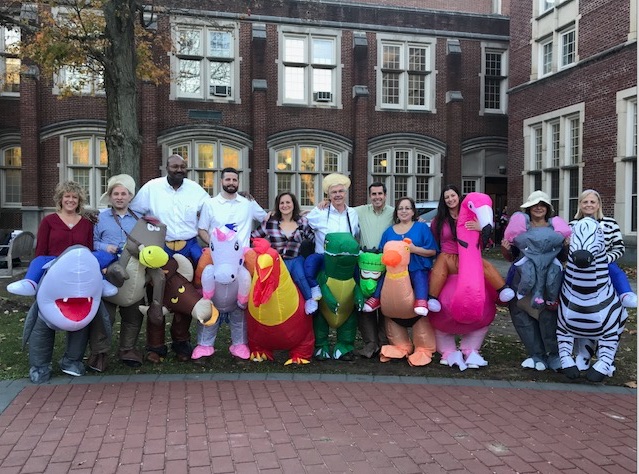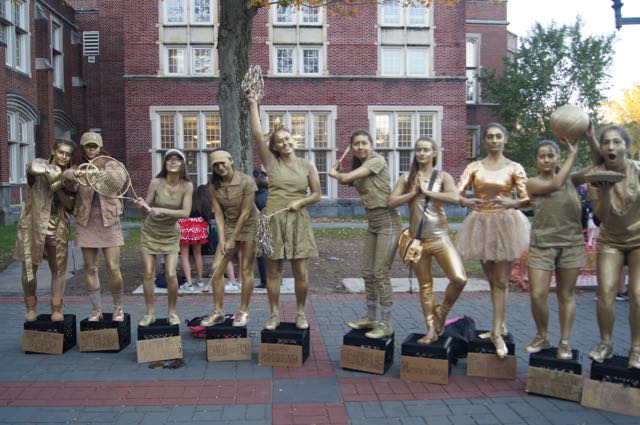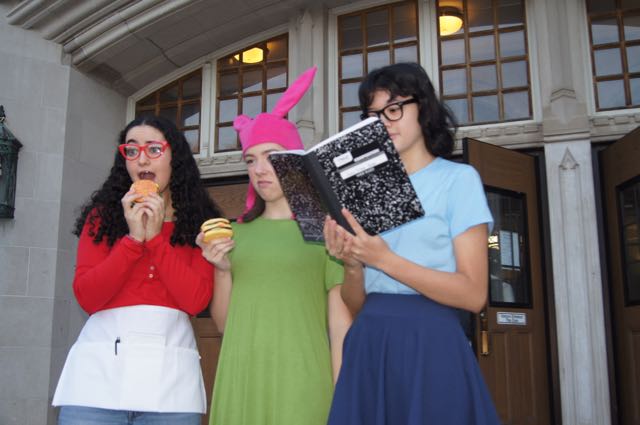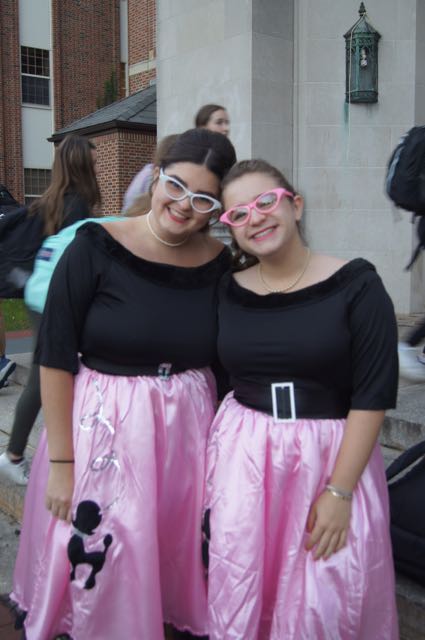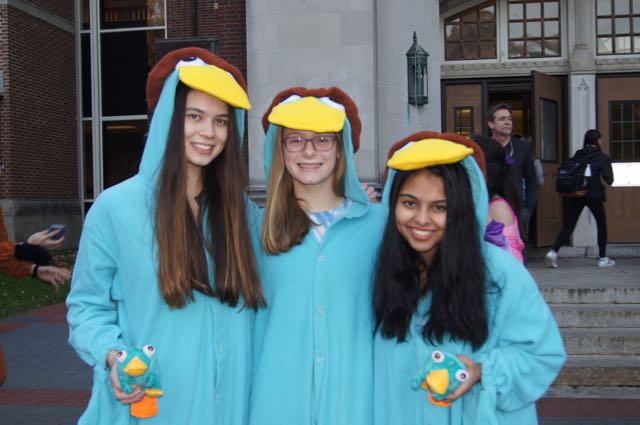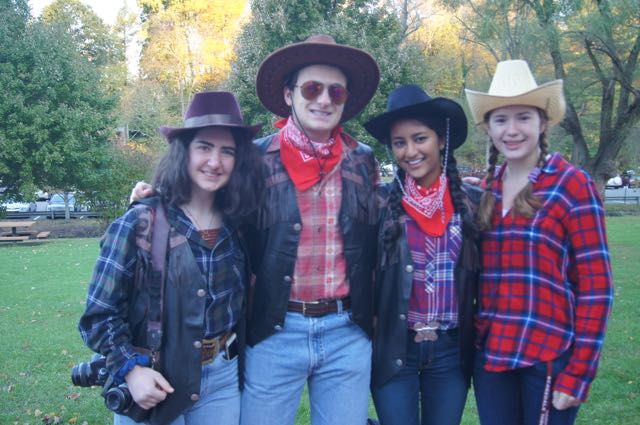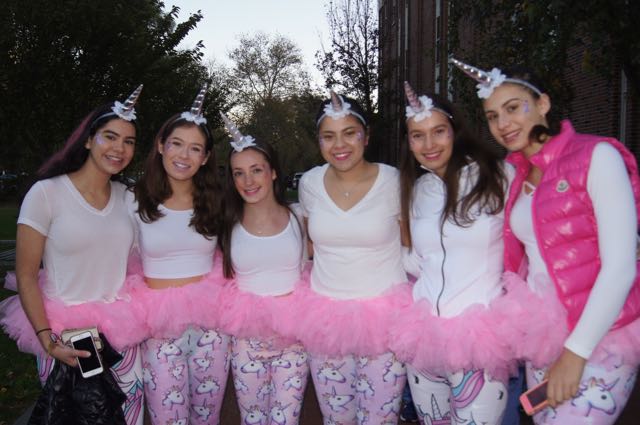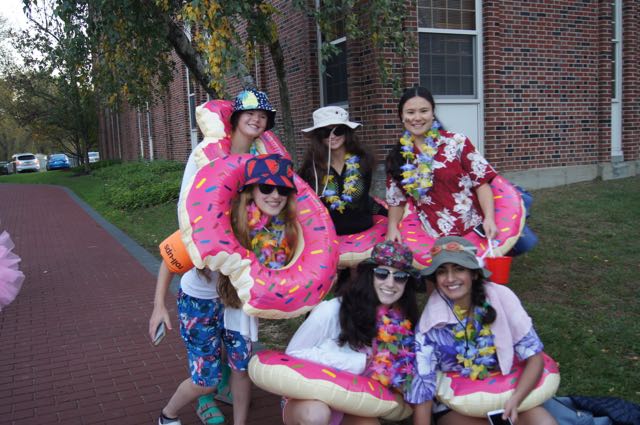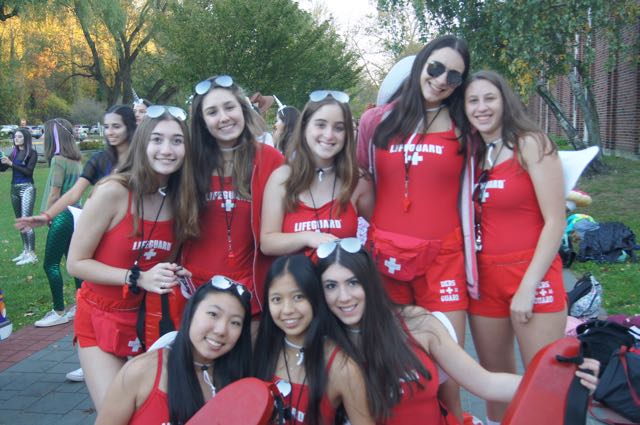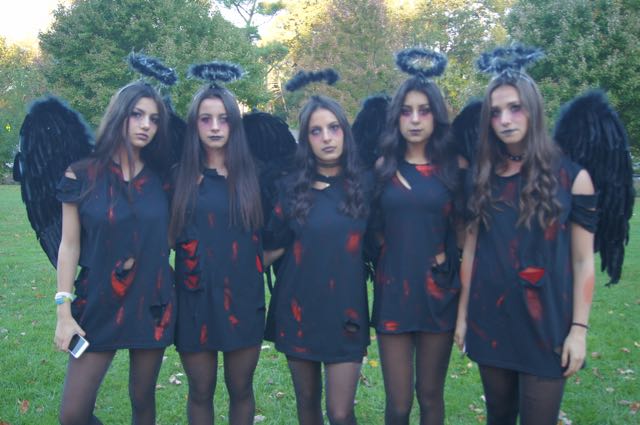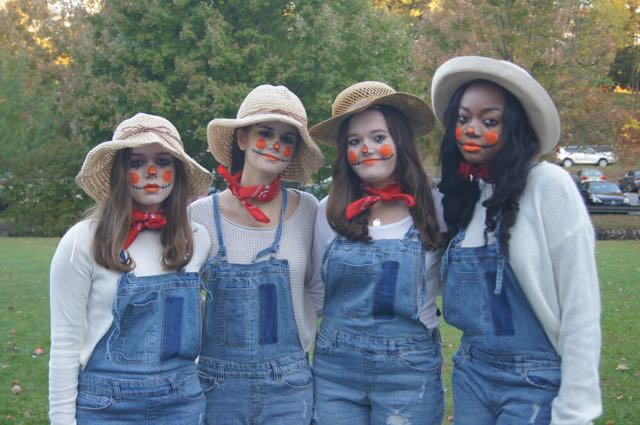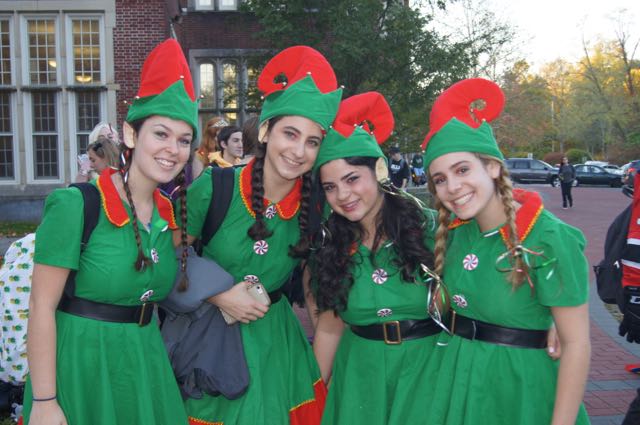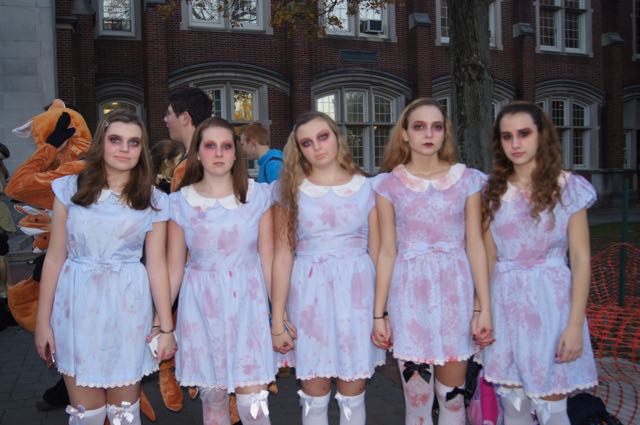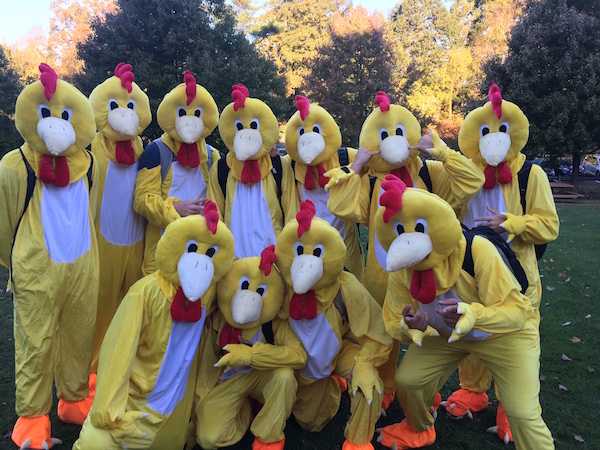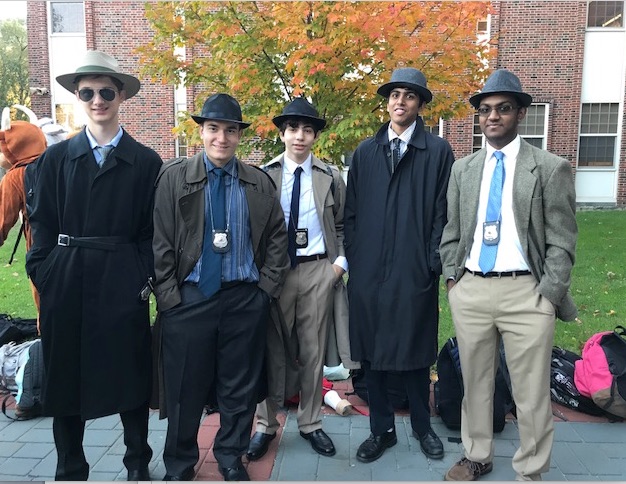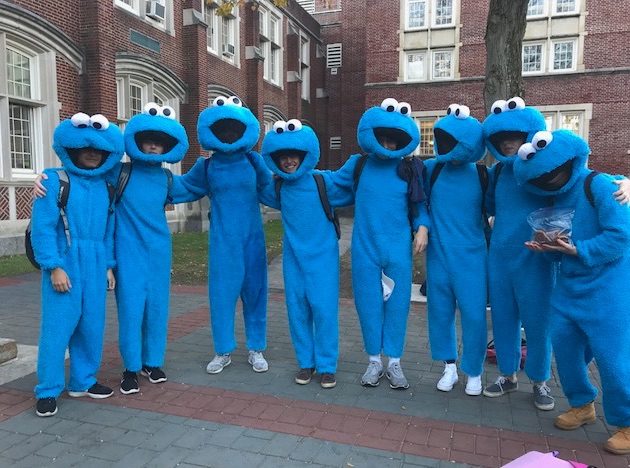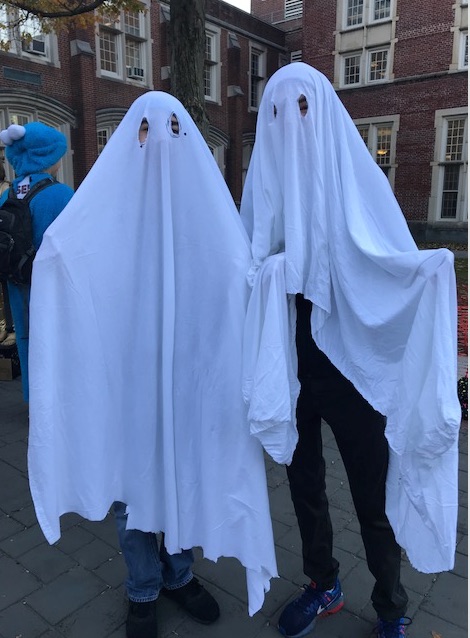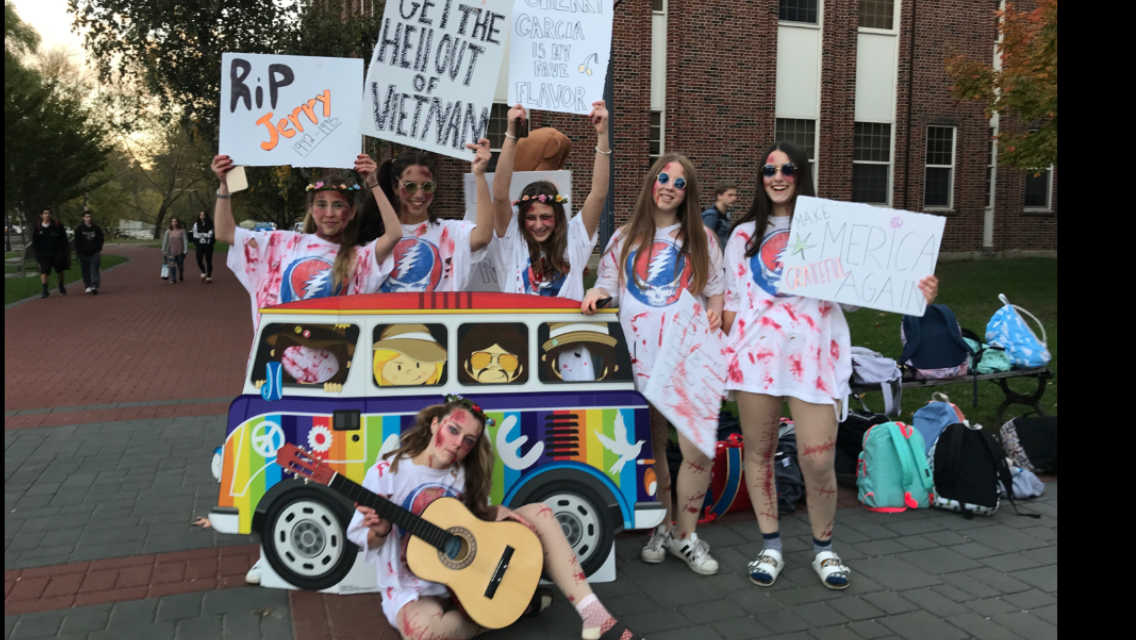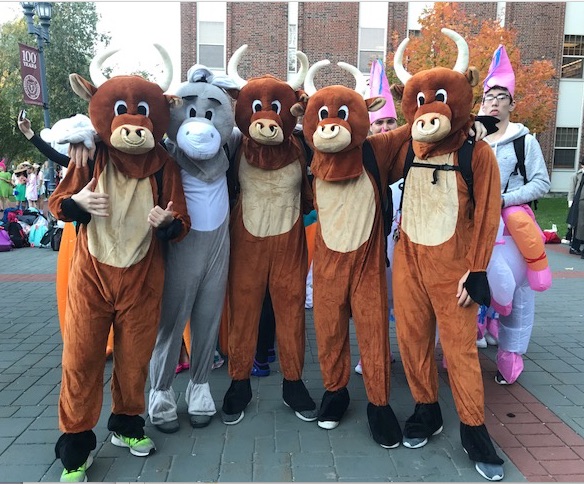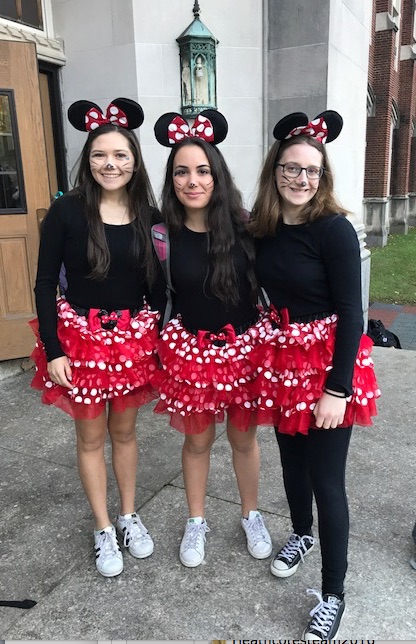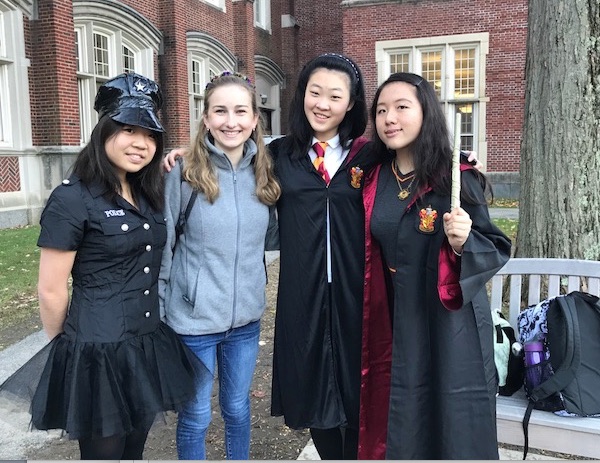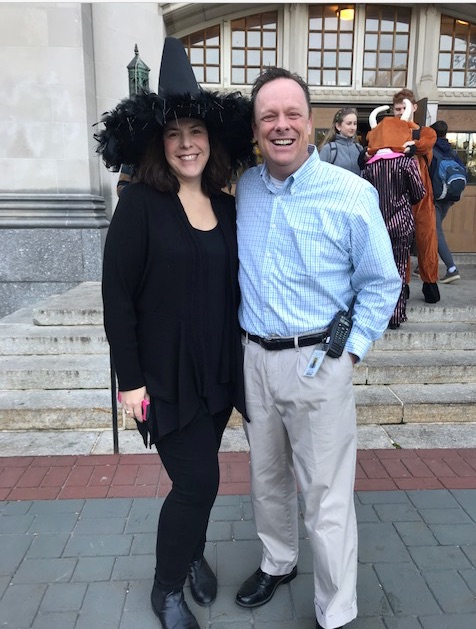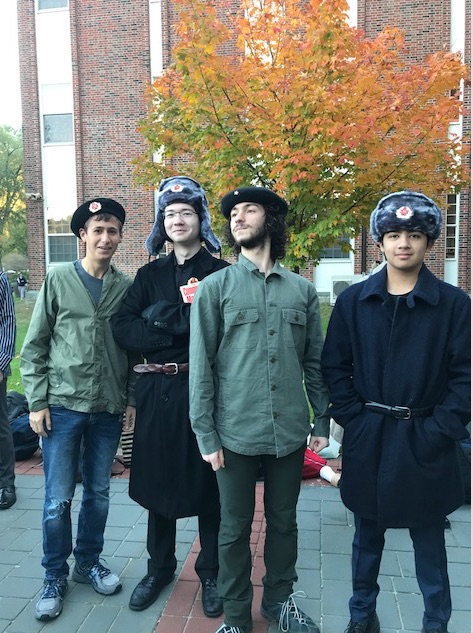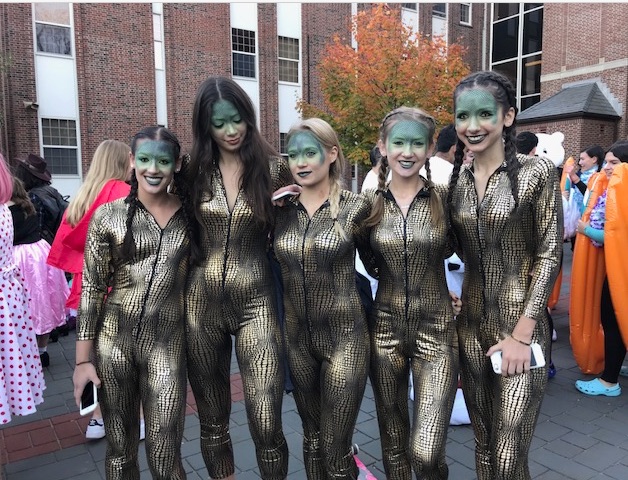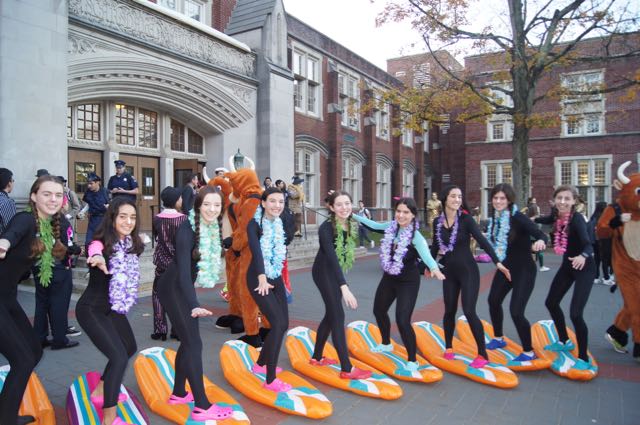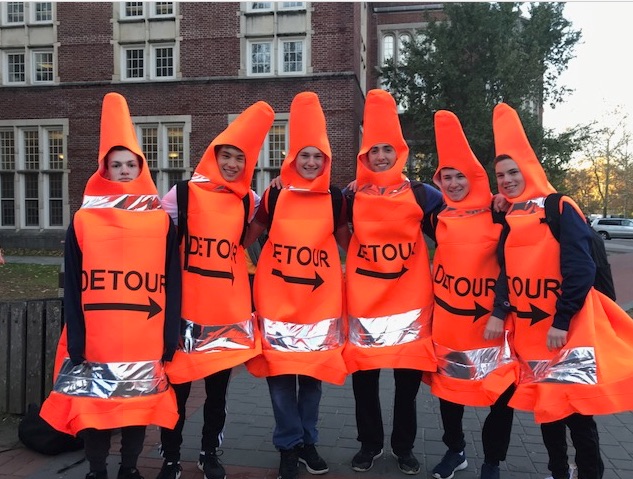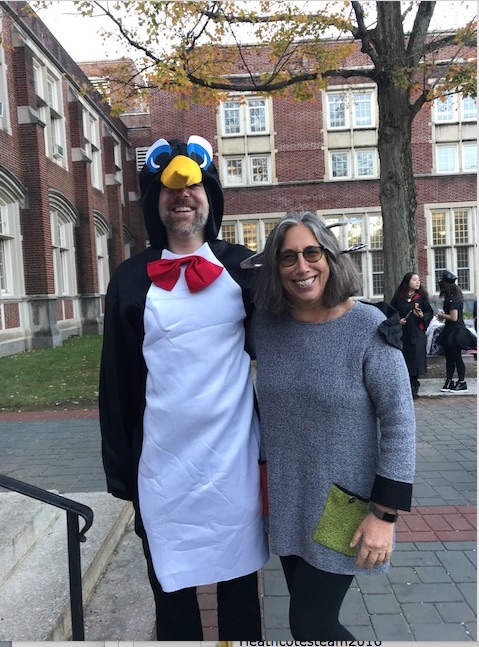Mold Found in Greenacres School Classrooms and Basement
- Details
- Written by: Joanne Wallenstein
- Hits: 12163
 (Updated November 23, 2017) Confirming what many have suspected for years, the Scarsdale School District released recent findings of mold testing at Greenacres School in an email to parents from School Superintendent Dr. Thomas Hagerman and Assistant Superintendent Stuart Mattey on Wednesday November 22nd. The report says the testing was done on October 11 and October 28, 2017.
(Updated November 23, 2017) Confirming what many have suspected for years, the Scarsdale School District released recent findings of mold testing at Greenacres School in an email to parents from School Superintendent Dr. Thomas Hagerman and Assistant Superintendent Stuart Mattey on Wednesday November 22nd. The report says the testing was done on October 11 and October 28, 2017.
Interior mold scores are measured in relation to mold scores on the outside of a building. Mold scores greater than 150 indicate a moderate probability that mold is originating inside the building and mold scores greater than 250 indicate a high probability.
According to the report, fungal growth has occurred in the basement of the school.In most samples from the basement, the mold score was 300, which is the maximum value on this scale, indicating the highest probability that the mold is from an interior source.
The humidity in the basement ranged from 63% to 71% and in the classrooms from 43% to 53%. In the gym humidity reached 65%. These readings were taken when the temperature in the rooms were in the 50's. According to the report, "Humidity levels greater than 30% increase the potential for mold growth, and high humidity, 60% or greater can cause biological contamination."
Samples collected in the psychologists office, classroom 7A and 9 had scores of ranging from 164-204.
In classroom 2B, 22 and 35, the teacher's lounge, the scores range from 191-250 which indicate a moderate probability that the spores originated inside the classrooms. Mold was found on all three levels of the school.
It should be noted that the building does not have a full concrete foundation. Some areas have dirt crawl spaces and it appears that the rooms above these crawl spaces are the areas with the mold. The report done by Regulatory Compliance of Thornwood does not include testing of the dirt crawl spaces or information on how mold could be remediated there. Dehumidifiers were installed in the basement on one side of the school but these do not seem to be effective at eradicating mold in that area.
The letter says, "Because there were some elevated scores for mold, the District will be following all the recommendations in the last few paragraphs of the abstract. This work will be performed over the Thanksgiving weekend. Re-testing of the affected areas will be scheduled for next week. We will also be sharing these results once in hand."
After years of hearing anecdotal reports about mold in the school, Scarsdale10583 sent a Freedom of Information Law (FOIL) request to Assistant Superintendent Mattey on July 21, 2017 requesting environmental reports, work orders for mold remediation and complaints from parents, students and teachers about excess moisture or mold from 1996 to 2015. The FOIL request was acknowleged, but despite multiple reminders to Mattey and School Board President William Natbony to date no information has been received. Their lack of response is against the law. You can see the FOIL request here.
The Board of Education and Administration are in the process of finalizing plans for a major bond referendum to fund an addition to Greenacres School that leaves the older of the portions intact. If the mold is deemed to be an issue, they may need to rethink the proposal.
See the report on the district website here:
New Retailers Coming to Town and more from Village Hall
- Details
- Written by: Joanne Wallenstein
- Hits: 8565
 Good news for downtown Scarsdale. At the Village Board meeting on Tuesday night November 14, Amy Nadasdi and Dalya Kahn reported on efforts by The Acceleration Project (TAP) to revitalize the Village center. TAP has been providing consulting services to current and potential businesses and has been successful at working with Village landlords to attract some new retailers to town.
Good news for downtown Scarsdale. At the Village Board meeting on Tuesday night November 14, Amy Nadasdi and Dalya Kahn reported on efforts by The Acceleration Project (TAP) to revitalize the Village center. TAP has been providing consulting services to current and potential businesses and has been successful at working with Village landlords to attract some new retailers to town.
The two reported that Rudy's Music Shop is coming to Scarsdale from Manhattan, and that Bango Bowls will soon be serving Acai fruit bowls and smoothies on Harwood Court. They also said that Bobby Vans is considering opening a family friendly restaurant in the site formerly occupied by Wuji.
TAP has now stepped in to manage the Chamber of Commerce and the "Light the Dale" tree lighting will be held in Scarsdale Village on December 1. The farmers market on Thursdays will be moved to an indoor location for the winter months.
All good!
Mayor's Comments:
Mayor Dan Hochvert asked drivers not to pass school buses that are stopped to pick up or drop off children.
He discussed the enforcement of a law that bars leaf piles in streets and reported that many landscapers are following the rules and they are not piling the leaves in the street. He said there appears to be fewer piles on the streets this year and asked residents to thank their neighbors who are complying with the rules and keeping Village streets passable
He also said that the creation of a dog park is under discussion. The Village may do a survey to find out if people would like one and to consider possible locations.
Batting Cages:
In other news, the Scarsdale Little League has contributed $50,000 to provide and maintain batting cages at Crossway Field #3. These will include batting machines. Residents of west Quaker Ridge were consulted and had no objections. Both the SHS Varisity and JV baseball teams will use the batting cages for training.
Heritage Tree:
Trustees approved a resolution to designate an American Beech tree in Chase Park as a Heritage Tree, signifying it is "unique and of importance to the community based on its species, size, age, location and/or historical significance. The tree joins an historic White Oak at the Womans' Club, Dawn Redwood trees at Library Pond, a Sugar Maple grove at Fox Meadow School and Tulip trees at Hyatt Field Park that have also been designated as Heritage Trees.
Speed Limits Around Schools:
Trustees held a hearing and approved a resolution to codify the speed limit on two streets near two elementary schools. Between 7 am and 6 pm on school days the speed limit is 15 miles per hour near Fox Meadow School on Butler Road between Brewster Road and Brite Avenue and in front of Greenacres Schhool at Huntington Avenue from Brewster Road to Montrose Road.
These speed limits are now included on a longer list of streets around Edgewood, Fox Meadow and Greenacres Elementary Schools where the speed limit on school days between 7 am and 6 pm is 15 mph to safeguard children.
Land Use:
Prior to the Village Board meeting, the village land use boards reported to trustees on activities and their thoughts: The Zoning Board of Appeals and BAR submitted brief summaries to the trustees. The Planning Board read a list of themes that it has encountered. The points raised by the land use boards included FAR, setbacks, roof lines, zoning "bonus" spaces, subdivisions, tree removal, rock removal, signage, etc. These items were raised as issues for the trustees to reflect and consider possible review or study.
Two Shopping Events in Scarsdale This Week
- Details
- Written by: Joanne Wallenstein
- Hits: 4432
 Shop and Share in Scarsdale Village
Shop and Share in Scarsdale Village
On Wednesday November 15th, from 12-9pm, retailers I Am More Scarsdale, Wilson and Son Jewelers and Rothmans will donate 10% of all proceeds to the Sharing Shelf of Family Services of Westchester. There will be wine and spirits and delicacies at each shop provided by Cooked & Co and Zachys.
I Am More Scarsdale is having a trunk show featuring a new line of shoes and boots and will also feature new styles from existing vendors. Check out new offerings at Wilson and Son Jewelers and Rothmans as well.
Ladies Night Out at the Golden Horseshoe
On Thursday night November 16 from 5-8 pm, stop by the Golden Horseshoe for Ladies Night Out at Beginnings, Cheryl's Closet, Current Home and Shoe-Inn.
Marathon Tales 2017
- Details
- Written by: Joanne Wallenstein
- Hits: 8157

Did you run? Send your pictures and details about your experience to scarsdalecomments@gmail.com.
Former Scarsdale School Board member Lew Leone ran his first marathon on Sunday. Here's what he said: "My first marathon was a blast. The New York City crowds are electrifying and it felt like a 26-mile party. I saw family and many friends along the way. Luckily I had a good friend, Matt Powers, who pulled me through the last 6 miles. That was the most challenging physical effort I've ever endured. Not sure I want to do it again."
Elizabeth and Jim Detmer of Edgewood Road ran the marathon together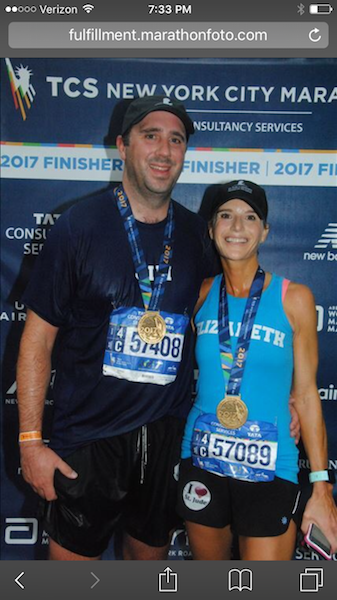
Andrea Seiden of Greenacres Avenue helped a disabled man from the Democratic Republic of the Congo run the marathon through Achilles International.
Running the NYC With Freddy by Andrea Seiden
Despite having completed several NYC marathons, I was not confident in my abilities to help someone else cross the finish line -- especially, someone with a disability. But, when Achilles International, an organization dedicated to enabling people with disabilities to participate in mainstream running events, contacted me, it was hard to say no. After a vetting process, I was paired with Freddy Mabika Ntumba from the Democratic Republic of the Congo.
Freddy is a 32 year-old, handsome, quadriplegic man with a full and meaningful life. During our initial conversations, I quickly realized that while he is tethered to a wheelchair and 24-hour care, his spirits and positive nature soar; he continues to embrace life's challenges with gusto and passion. During our 4:30 AM ride to Staten Island, I learned about Freddy as person, not someone who was disabled. He shared much about his life, his motorcycle accident, his girlfriend, family, work, and the wheelchair soccer team that he proudly joined. On the light side, he joked that, "legs can be overrated." And, on a more somber note, he told me about the strides he has made to fight  the stigma associated with being paralyzed in Africa. "People actually think that you are cursed." His candor and his easy nature made me feel so comfortable with him.
the stigma associated with being paralyzed in Africa. "People actually think that you are cursed." His candor and his easy nature made me feel so comfortable with him.
Nothing could prepare me for sheer joy I experienced during our run together. When I pushed Freddy into the corral of 50,000 athletes in Staten Island, we were overwhelmed by the cheering and well wishes of the scores of runners waiting to start the race. And so were the other Achilles Athletes-- many cried with deep emotion.
 With my co-guide, a young, beautiful and wonderful Pakistani medical student, named Maani, we fed Freddy, gave him water and Gatorade, wiped his face with soaked sponges, adjusted his legs, told him jokes, and pushed him up 5th Avenue when his shoulders froze from exhaustion at the 24-mile mark.
With my co-guide, a young, beautiful and wonderful Pakistani medical student, named Maani, we fed Freddy, gave him water and Gatorade, wiped his face with soaked sponges, adjusted his legs, told him jokes, and pushed him up 5th Avenue when his shoulders froze from exhaustion at the 24-mile mark.
Runners and spectators alike were humbled and inspired by Freddy's willpower to preserve. We could hear the constant drumbeat of encouragement, "Go Achilles," "You got this," which truly propelled all of us to cross the finish line. In times past, I was so self-focused that I counted every passing second, hunkered down with my private play list, and repeated my mantra to finish. I realized that I had missed so much of the race – the spirit of the spectators, the collective energy of the other runners. With Freddy, I enjoyed every moment of the race. There was such power in the day -- that I barely noticed that it took us 6 ½ hours to finish.
When it was all done, Freddy thanked us for helping him to achieve a dream, and I thanked him for a life-changing blessing.
Andrea's son Gregory Seiden, SHS class of '11 ran with "Team for Kids."  He says, "After finishing the NYC Marathon in 2016, I knew that I wanted to come back and run again. While I told myself I would run again to improve on my time, I gained so much more than just a few minutes off my splits in the process. I ran with Team for Kids, an organization committed to helping NYC youth learn about healthy life practices and the importance of fitness. The time spent training with Team for Kids allowed me to forge friendships, and strengthen my legs ahead of Sunday. As I ran north on First Avenue I was inspired that I was not only feeling strong, but also running for such a great cause. The feeling of pride as crossed the finish line at Tavern on the Green was unparalleled. It was another fantastic race day. I hope to have many more in the years to come."
He says, "After finishing the NYC Marathon in 2016, I knew that I wanted to come back and run again. While I told myself I would run again to improve on my time, I gained so much more than just a few minutes off my splits in the process. I ran with Team for Kids, an organization committed to helping NYC youth learn about healthy life practices and the importance of fitness. The time spent training with Team for Kids allowed me to forge friendships, and strengthen my legs ahead of Sunday. As I ran north on First Avenue I was inspired that I was not only feeling strong, but also running for such a great cause. The feeling of pride as crossed the finish line at Tavern on the Green was unparalleled. It was another fantastic race day. I hope to have many more in the years to come."
Margaret Souther, SHS '09 said, "I ran the marathon with Catholic Charities, which raised money that will go towards providing food, education and resources to fellow New Yorkers in need. I was able to raise $4,465, exceeding my original goal by over $1000! What an incredible experience..i'm still looking back at the race and smiling. I loved running through so many 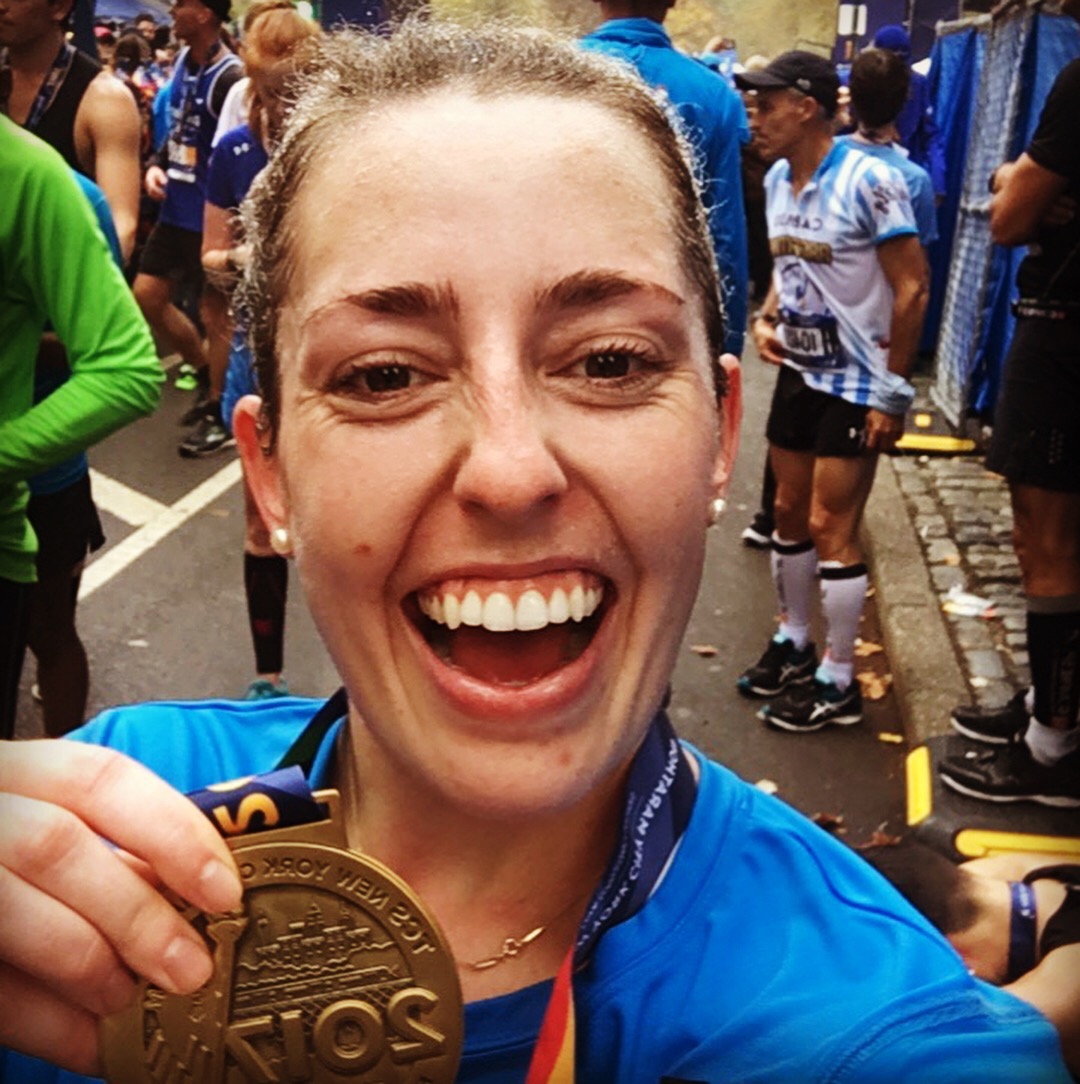 different neighborhoods and feeling the energy from people in all five boroughs. i have to say one of my favorite parts was turning onto first avenue and seeing the sidewalks just packed with people cheering. Definitely got me through the last couple of miles in the race!! Couldn't have done it without the support from my friends and family along the whole way!!!"
different neighborhoods and feeling the energy from people in all five boroughs. i have to say one of my favorite parts was turning onto first avenue and seeing the sidewalks just packed with people cheering. Definitely got me through the last couple of miles in the race!! Couldn't have done it without the support from my friends and family along the whole way!!!"
Matt Powers and his wife ran as well. He said, "The NYC Marathon is an experience like no other. I found myself at Mile 20, overwhelmed with excitement and ready for the final 6.2 miles. A friend told me Lew Leone was about 5 minutes behind me. Nothing is better than running with a friend like Lew. He caught up to me and we conquered our first marathon finish line TOGETHER. The first 20 were magical, but the last 6.2 were once in a lifetime and a moment I will never forget. 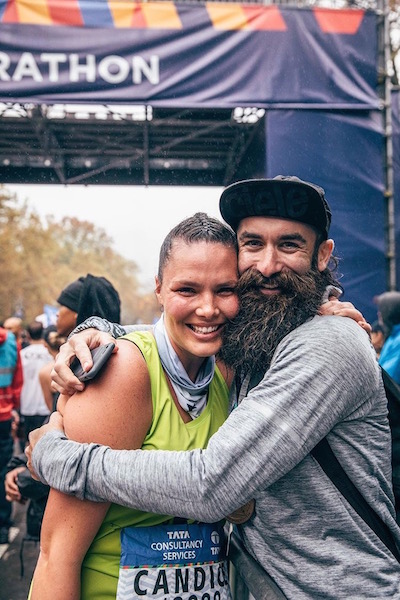
Did you run on Sunday? Please send your photo and story to scarsdalecomments@gmail.com to share with the community.
Amazing Halloween Costume Display from the SHS Class of '18
- Details
- Written by: Joanne Wallenstein
- Hits: 8309
 The SHS Senior class of 2018 finally got their turn to celebrate Halloween at school. The spirited group was full of energy at 8 am on Tuesday October 31 when they showed up in colorful and innovative costumes and posed for photos in front of the Brewster Road entrance to the school. There were snakes, CIA agents, revolutionaries, the Grateful Dead, farmers, chickens, elves, devils, surfers, swimmers, lifeguards, the Grady Twins from the Shining and a stunning spread of gold trophies. Karl Marx met Jerry Garcia, the cookie monster greeted the Mario Brothers as the kids paid homage to heroes and heroines, past and present.
The SHS Senior class of 2018 finally got their turn to celebrate Halloween at school. The spirited group was full of energy at 8 am on Tuesday October 31 when they showed up in colorful and innovative costumes and posed for photos in front of the Brewster Road entrance to the school. There were snakes, CIA agents, revolutionaries, the Grateful Dead, farmers, chickens, elves, devils, surfers, swimmers, lifeguards, the Grady Twins from the Shining and a stunning spread of gold trophies. Karl Marx met Jerry Garcia, the cookie monster greeted the Mario Brothers as the kids paid homage to heroes and heroines, past and present.
Teachers, princiipals and the deans couldn't miss out on the fun. Check out the entire counseling department on inflatable animals, Sue Silver with a kitchen tong through her head and Heather Waters as the Statue of Liberty.
It couldn't have been more fun!